| |
Alzheimer's disease and related dementias among older U.S. Medicare beneficiaries with and without HIV
|
| |
| |
Lancet Aging & HIV Symposium March 18 2022
Xiaoying Yu, MD, PhD
Department of Preventive Medicine and Population Health University of Texas Medical Branch at Galveston , United States The Lancet Summit: HIV and Healthy Longevity. March 17-18, 2022
why do the graphs look like they are almost the same for the 65-75 groups, because Alzheimer's risk starts after 75?
I think there are several reasons. Age is number one risk factor for dementia. More severe dementia appear in older age. Medicare data underestimate the mild cognitive decline since it is based on physician diagnosis using ICD code. So the true prevalence could be even higher. I also think the big contribution for the dementia risk, especially more recent years, is the comorbidities which is much higher in PWH. In the adjusted model, we are comparing PWH vs PWOH assuming they have same values on all the adjusted variables including all comorbidities. This is why the difference is much smaller, and most noticeable in the oldest groups. This also infer the importance of managing comorbidities in PWH when they age.
Yes, the largest difference is among 80+ group. I tried to pull out some numbers from my saved file. Maybe you can refer to these numbers showing the largest difference in adjusted prevalence between PWH and PWOH among group 80+:
Adjusted for demographics (continuous age, race/ethnicity, original Medicare entitlement, Medicare/Medicaid dual coverage and 16 comorbidity classes. This explained a lot of the differences. But PWH still showed excessive risk even we adjusted for so many factors.
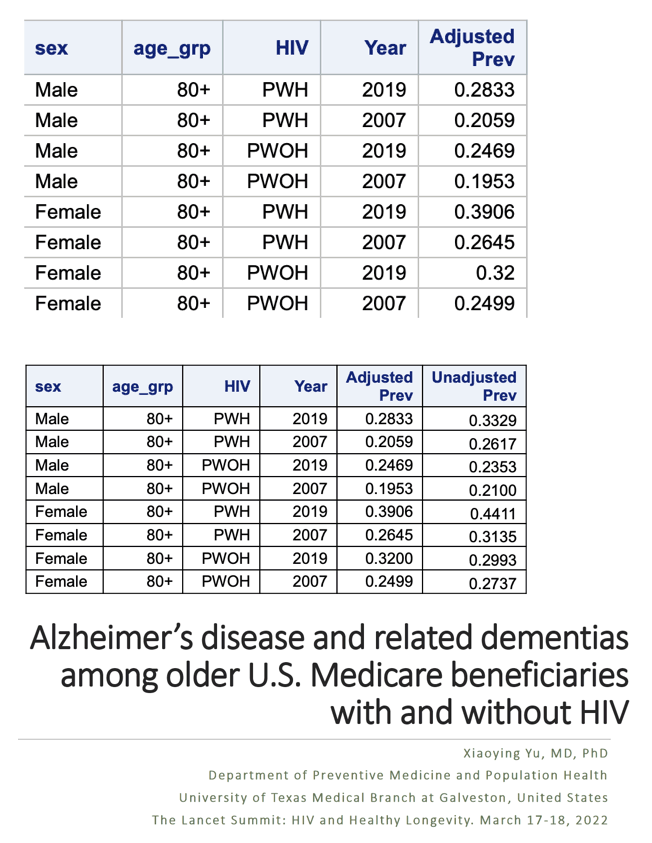
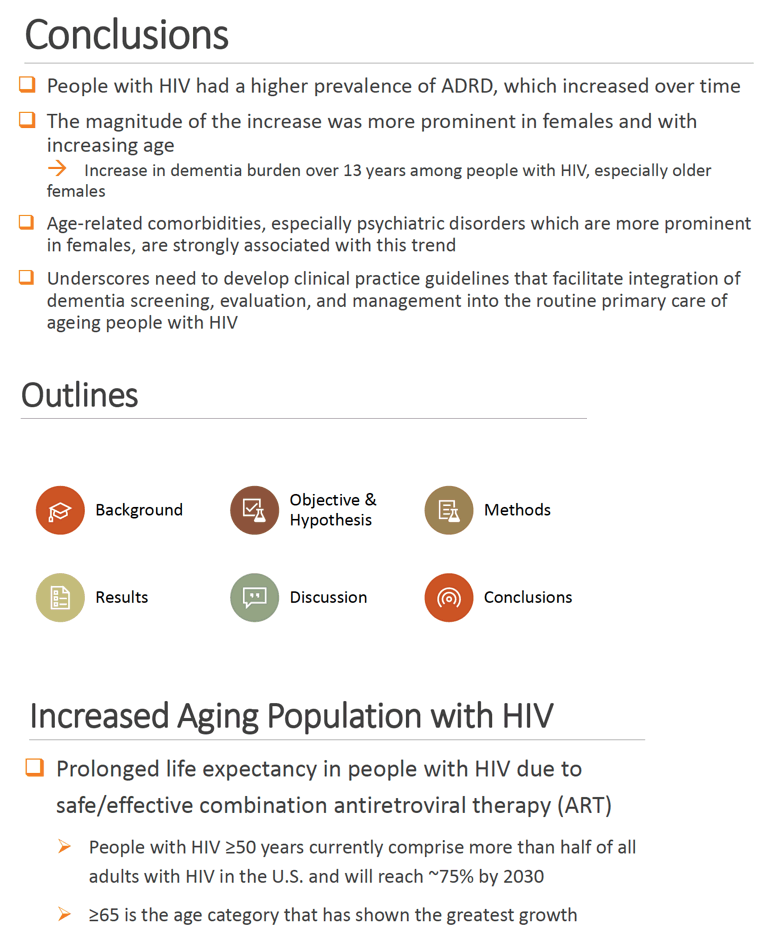
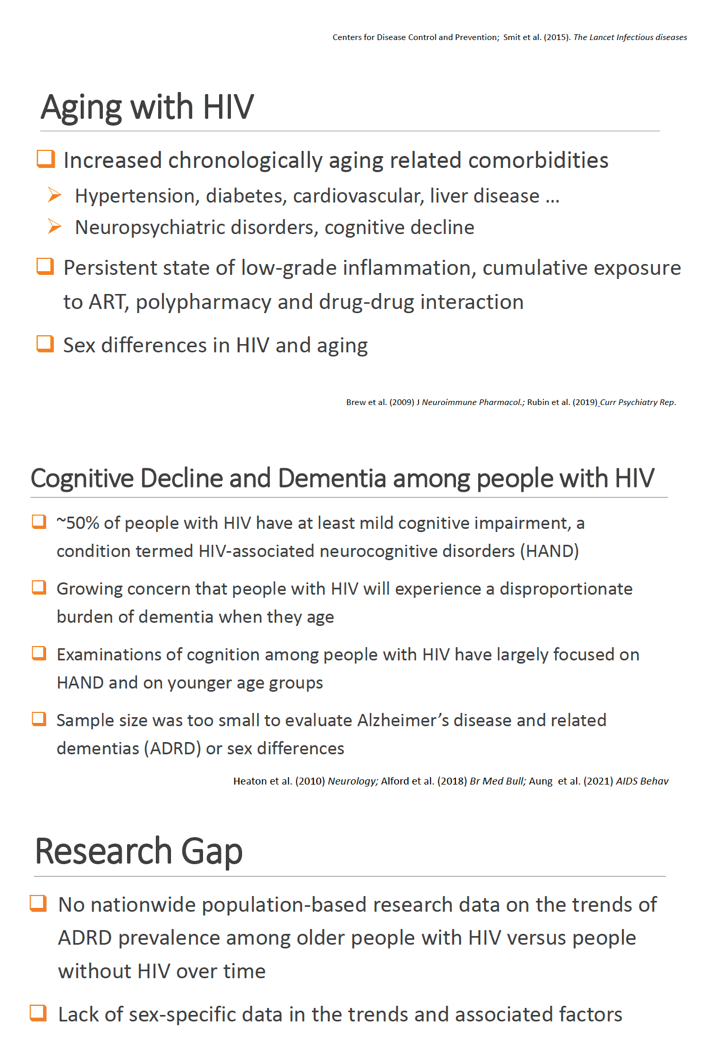
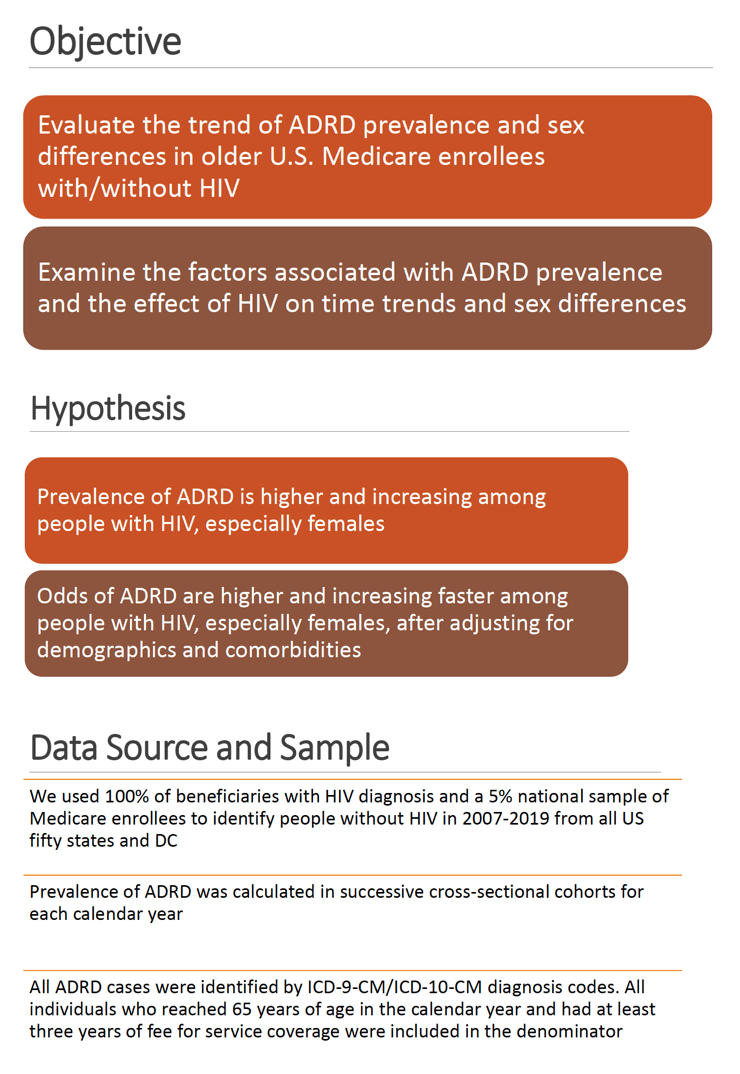
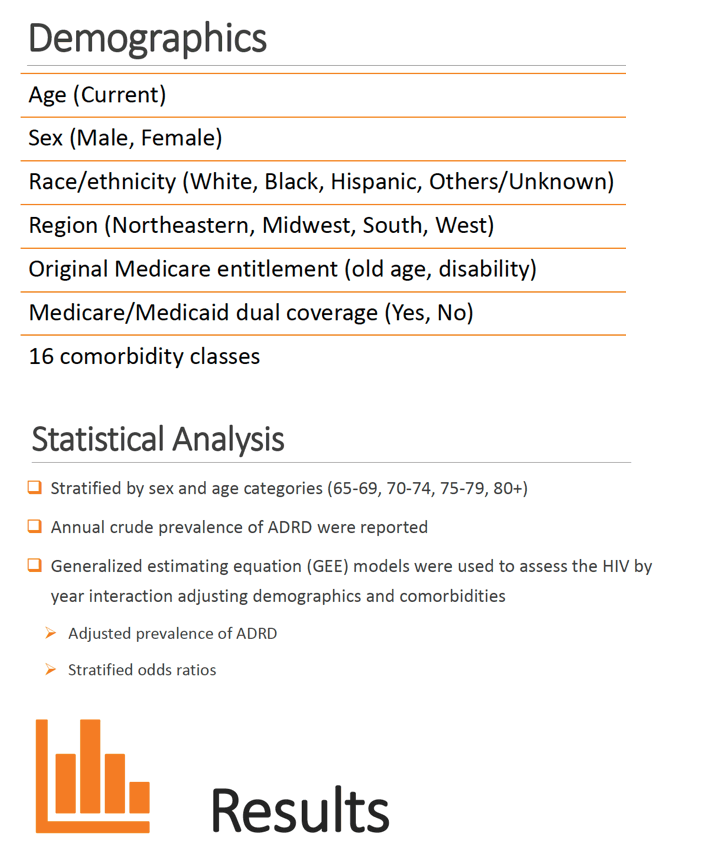
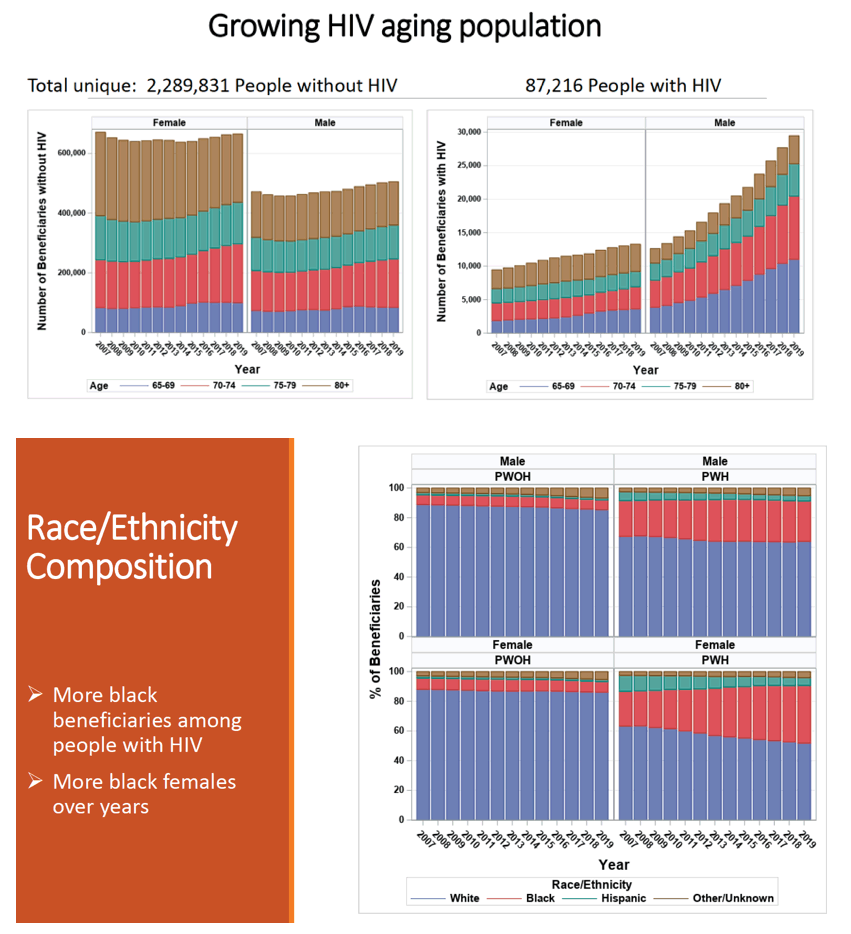
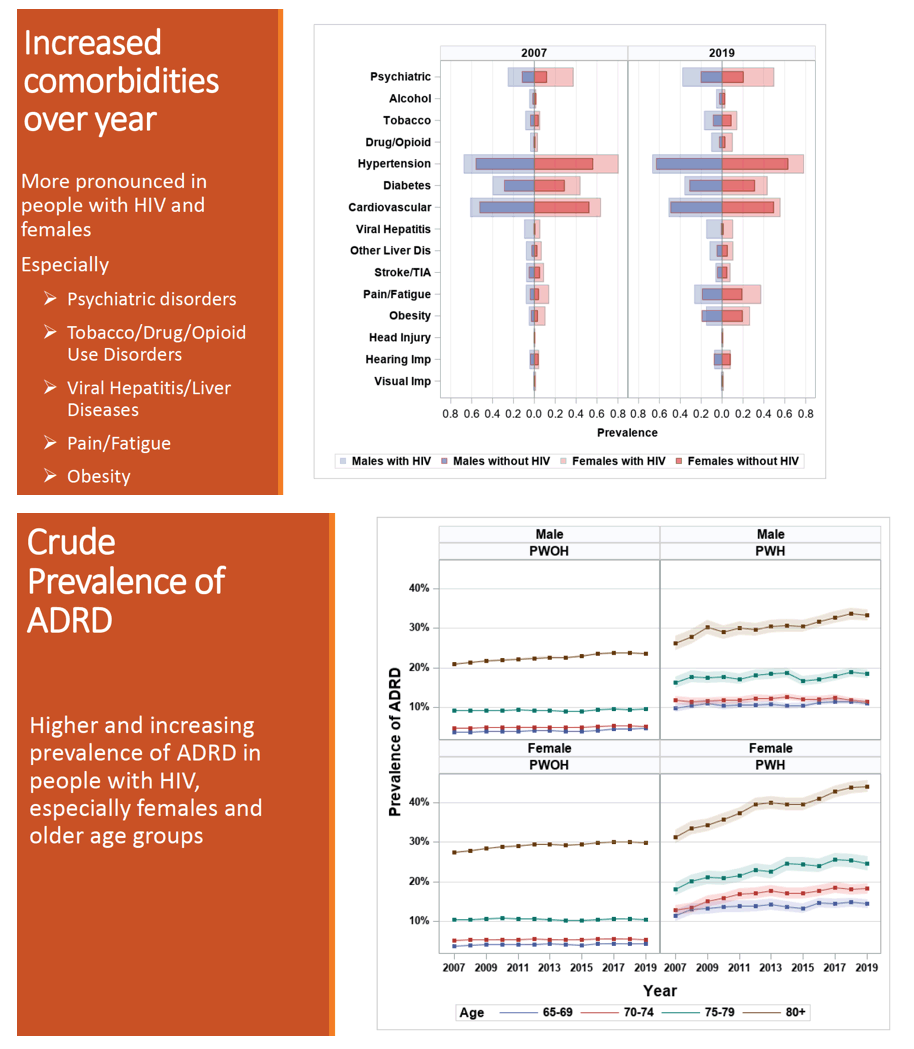
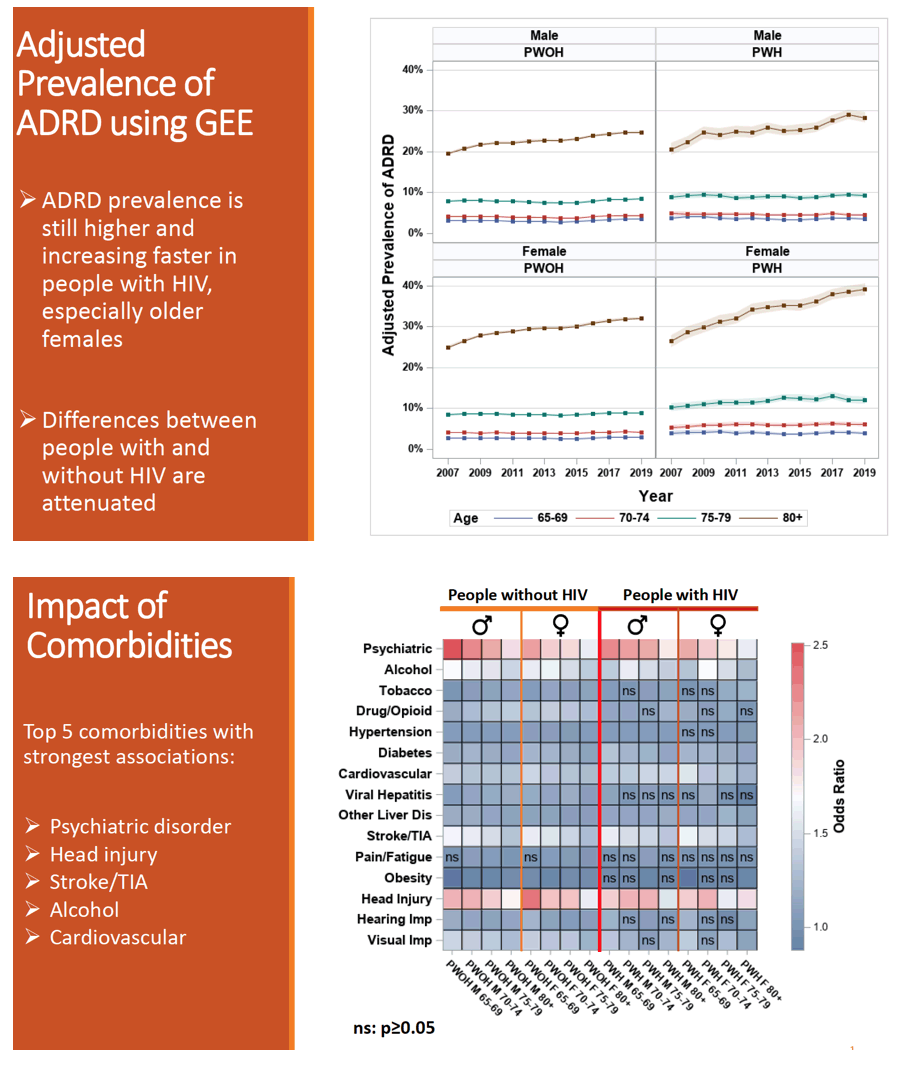
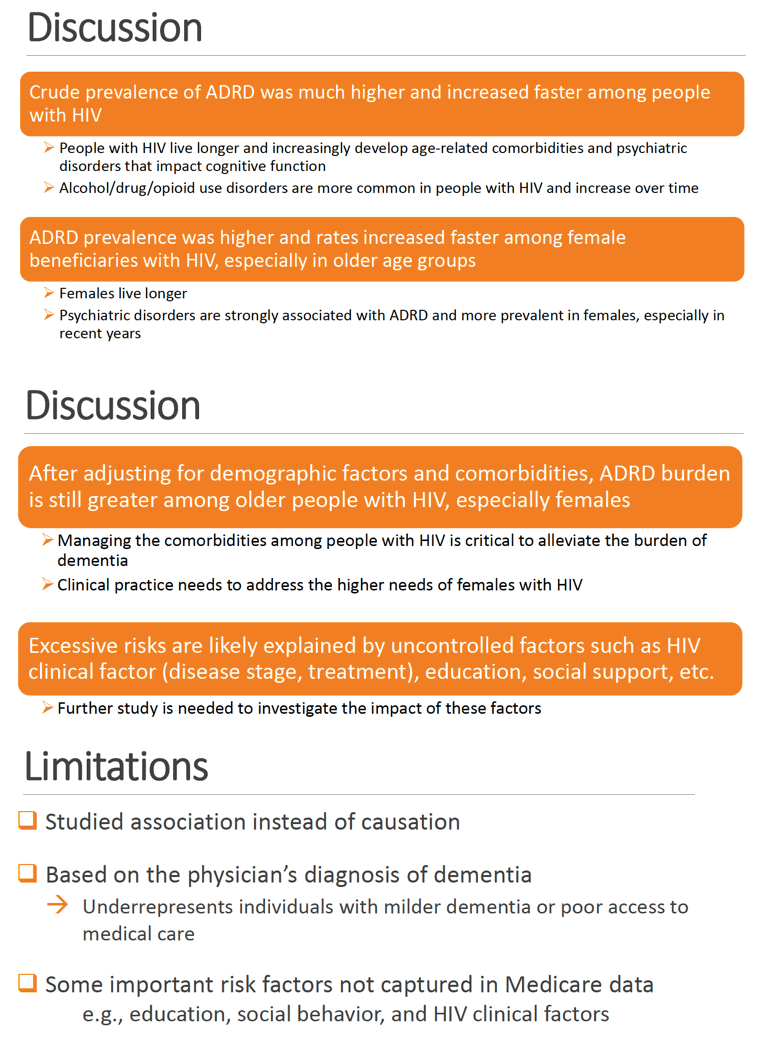
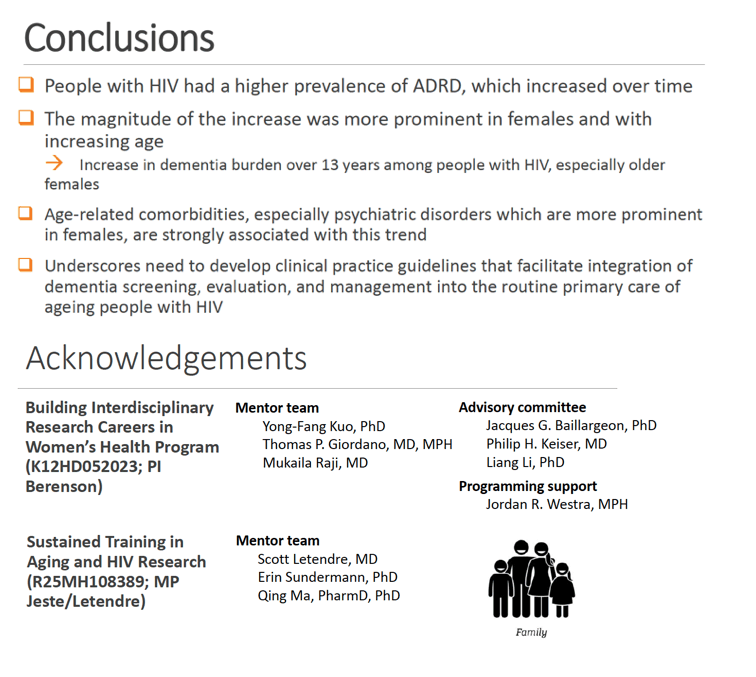
|
|
| |
| |
|
|
|